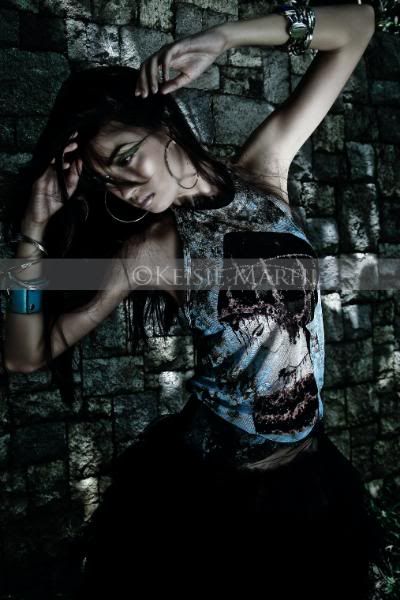In the Philippines, copyright vests at the moment of creation. Or in photographic terms, copyright vests at the moment you click the shutter button.
Click. Copyright. Click. Copyright. Click. Copyright.
It's a simple as that. Yet in reality, it is not so simple.
The copyright or the right to reproduce the work is vested on the photographer of that particular picture (a.k.a the shutter-presser). The law ignores the fact, that in some types of photography, no photographer is an island, entire unto himself. In some types of photography, the process is more similar to a movie with various cast and crew who help create the project. In collaborative works like movies, collaborators are in some acknowledged by the law. In photography however, it is still the photographer who solely has copyright.
In a full fashion shoot, you will usually have a make-up artist, a hair stylist, a wardrobe stylist, a set producer, a creative director, a lighting assistant, another assistant, a model or several models and the photographer.
It makes for one VERY crowded island.
The reality is, even if the photographer is very good, if one of the other aspects go wrong, the photo is often not good.
Model is not very attractive or does not move/pose well = pangit ang picture
Sloppy application of make-up= pangit ang picture
Clothes and accessories not appropriate for the shoot = pangit ang picture
Set design does not convey the message =pangit ang picture
Despite the importance of all these other factors, only the photographer is given ownership of the photo. I find this exceedingly odd considering that models/subjects make a world of difference in photographs.
As the law stands, the model has no say in how I distribute her photos. I can distribute naked pictures online and under strict copyright terms, she has no right to right to determine the how the photos are distributed or published. So theoretically, a photographer with Hayden-Kho-like intentions could photograph a woman and distribute these photos as he may.
The law, I believe, was created in a time where photographers did the entire process by themselves. They took the photos, developed them in their own darkrooms and printed these pictures themselves. The times have changed and perhaps the law should address the rights of the other people involved in the process of creating the photograph.
Click. Copyright. Click. Copyright. Click. Copyright.
It's a simple as that. Yet in reality, it is not so simple.
The copyright or the right to reproduce the work is vested on the photographer of that particular picture (a.k.a the shutter-presser). The law ignores the fact, that in some types of photography, no photographer is an island, entire unto himself. In some types of photography, the process is more similar to a movie with various cast and crew who help create the project. In collaborative works like movies, collaborators are in some acknowledged by the law. In photography however, it is still the photographer who solely has copyright.
In a full fashion shoot, you will usually have a make-up artist, a hair stylist, a wardrobe stylist, a set producer, a creative director, a lighting assistant, another assistant, a model or several models and the photographer.
It makes for one VERY crowded island.
The reality is, even if the photographer is very good, if one of the other aspects go wrong, the photo is often not good.
Model is not very attractive or does not move/pose well = pangit ang picture
Sloppy application of make-up= pangit ang picture
Clothes and accessories not appropriate for the shoot = pangit ang picture
Set design does not convey the message =pangit ang picture
Despite the importance of all these other factors, only the photographer is given ownership of the photo. I find this exceedingly odd considering that models/subjects make a world of difference in photographs.
As the law stands, the model has no say in how I distribute her photos. I can distribute naked pictures online and under strict copyright terms, she has no right to right to determine the how the photos are distributed or published. So theoretically, a photographer with Hayden-Kho-like intentions could photograph a woman and distribute these photos as he may.
The law, I believe, was created in a time where photographers did the entire process by themselves. They took the photos, developed them in their own darkrooms and printed these pictures themselves. The times have changed and perhaps the law should address the rights of the other people involved in the process of creating the photograph.


No comments:
Post a Comment